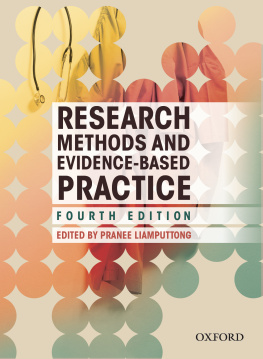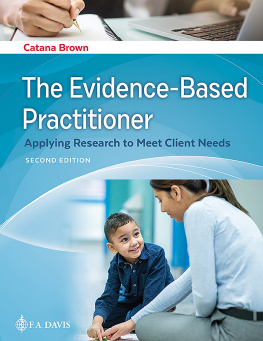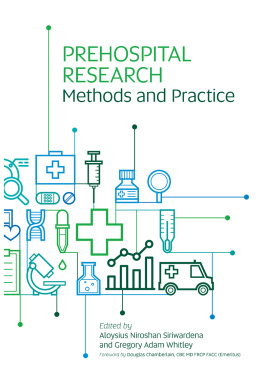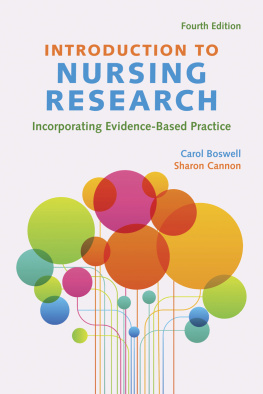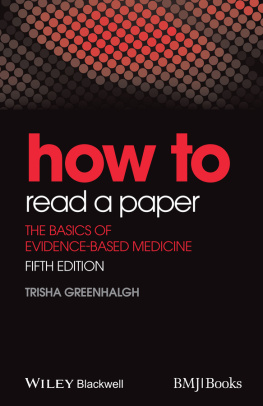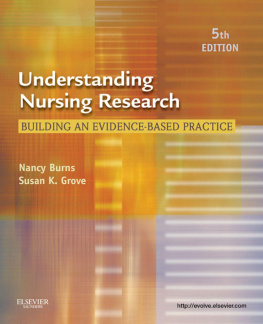Table of Contents
Page List
Guide

Dedication
In loving memory of my younger daughter
Emma Inturatana Rice
Who will forever live in my heart


Oxford University Press is a department of the University of Oxford. It furthers the Universitys objective of excellence in research, scholarship, and education by publishing worldwide. Oxford is a registered trademark of Oxford University Press in the UK and in certain other countries.
Published in Australia by
Oxford University Press
Level 8, 737 Bourke Street, Docklands, Victoria 3008, Australia.
Pranee Liamputtong 2022
The moral rights of the authors have been asserted
First edition published 2010
Second edition published 2013
Third edition published 2017
Fourth edition published 2022
All rights reserved. No part of this publication may be reproduced, stored in a retrieval system, or transmitted, in any form or by any means, without the prior permission in writing of Oxford University Press, or as expressly permitted by law, by licence, or under terms agreed with the reprographics rights organisation. Enquiries concerning reproduction outside the scope of the above should be sent to the Rights Department, Oxford University Press, at the address above.
You must not circulate this work in any other form and you must impose this same condition on any acquirer.

ISBN 9780190330378

Reproduction and communication for educational purposes
The Australian Copyright Act 1968 (the Act) allows educational institutions that are covered by remuneration arrangements with Copyright Agency to reproduce and communicate certain material for educational purposes. For more information, see copyright.com.au.
Edited by Adrienne de Kretser, Righting Writing
Typeset by Q2A Media Services Pvt. Ltd.
Proofread by Carolyn Leslie, AE
Indexed by Mary Russell
Printed in Singapore by Markono Print Media Pte Ltd
Disclaimer
Indigenous Australians and Torres Strait Islanders are advised that this publication may include images or names of people now deceased.
Links to third party websites are provided by Oxford in good faith and for information only.
Oxford disclaims any responsibility for the materials contained in any third party website referenced in this work.
Brief Contents
Expanded Contents
Pranee Liamputtong
Pranee Liamputtong and Zoe Sanipreeya Rice
Pranee Liamputtong and Virginia Schmied
Pranee Liamputtong, Zoe Sanipreeya Rice, Tinashe Dune and Amit Arora
Tanya Serry and Pranee Liamputtong
Patricia M. Davidson, Elizabeth J. Halcomb and Leila Gholizadeh
Priscilla Ennals, Kate DCruz and Linsey Howie
Pauline Wong, Pranee Liamputtong and Helen Rawson
Christine Imms and Susan Greaves
Miranda Rose, John E. Pierce and Sam Harvey
Margot J. Schofield and Christine Forrester-Knauss
Melissa Graham
Karl B. Landorf, Michelle R. Kaminski and Glen A. Whittaker
Kate A. McBride, Emma S. George, Freya MacMillan and Genevieve Z. Steiner
Ben Lyall and Emma Barnard
Brett Biles
Terese Bondas, Elisabeth O.C. Hall and Anita Wikberg
Nora Shields and Katherine Harding
Pranee Liamputtong and Tanya Serry
Tanya Serry and Pranee Liamputtong
Jane Pierson
Pranee Liamputtong, Nora Shields and Annemarie Gallichio
LIST OF FIGURES
LIST OF TABLES
PREFACE
Norman Denzin, in his 2011 writing The politics of evidence, contends that like an elephant in the living room, the evidence-based model is an intruder whose presence can no longer be ignored. This is even more true in 2021. Globally, evidence-based practice (EBP) has become a major preoccupation of researchers and practitioners in health care. EBP lends itself neatly to the practice of some health practitioners, particularly those who rely on interventions in their practice. No doubt EBP is very useful for certain health researchers and practitioners, but it overemphasises certain kinds of research and undervalues or ignores other kinds that can contribute greatly to health practices. Politically, this has prompted many researchers to suggest that EBP is developed to privilege certain health researchers, practitioners and health practices. The main debate is the question of what type of evidence we need in health care practice. Of course, not all evidence can be gathered from the approach advocated by EBP, and this is when we need to carry out research to find appropriate evidence that will be suitable for our practice and our clients. This is the precise reason for this book to be born.
In this book I bring together contributors who write about research methods that readers can adopt to find their evidence. I include both qualitative and quantitative approaches, as we need to select the method that is appropriate for the questions we ask. I also include chapters on the mixed methods research design so that readers can see that there are times when we need to consider both approaches in finding evidence. The volume also introduces ways in which we can make sense of the research data we have collected, and instructions on how to write up the data in a more meaningful way.
In this fourth edition, I have included several new chapters. A new element is an introductory chapter on evidence-based practice in health (Chapter 1). This is to underscore the importance of this practice in recent times. Further, in any piece of research, ethical issues are crucial. How do we carry out research without harming our research participants? In our preoccupation with finding evidence, we may forget that there is another party that we must acknowledge, and we must design our research carefully so that they will not be harmed. Chapter 4 is a new chapter that deals with this important matter.
Most new chapters appear in Part IV of this text. Mixed methods research has become useful in health research. It is argued that the mixed methods approach offers both depth and breadth to the research. Thus, it provides stronger evidence in research findings. Many other researchers and writers have pointed to this importance. Another new chapter in this edition is on research using the internet and social media. This is a timely chapter. Internet and social media research have become crucial, particularly during the pandemic of COVID-19 during 202021. We may be unable to conduct research face-to-face but we can still carry out our work using the internet as a medium. I myself have found this approach very valuable. The new edition also includes a chapter on researching with Aboriginal and Torres Strait Islander communities. It is written by an Indigenous scholar and provides in-depth knowledge about how we can conduct research sensibly and culturally appropriately with Aboriginal and Torres Strait Islander peoples. It is a vital chapter to have in this edition.

